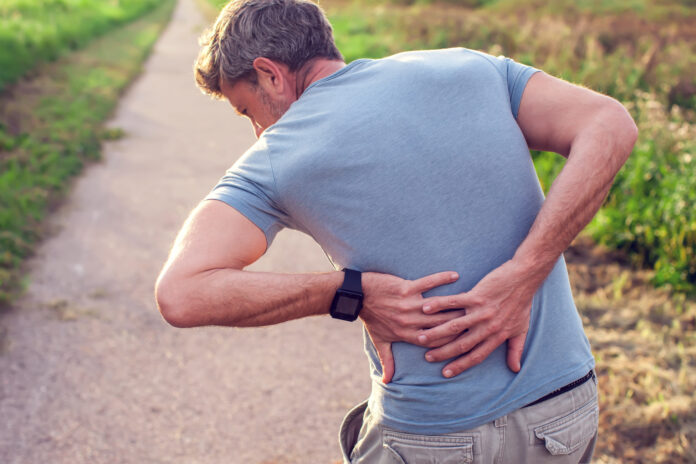
By Nameook Cho, L.Ac.
Lumbar spinal stenosis (LSS) is a chronic condition that causes low back pain and neurogenic claudication, often resulting in significant limitation of daily activities.
LSS is narrowing the spinal canal , compressing the nerves traveling through the lower back into the legs. While it may affect younger patients, due to developmental causes, it is more often a degenerative condition that affects people who are typically age 60 and older.
A research article, “Nonsurgical integrative inpatient treatments for symptomatic lumbar spinal stenosis: a multi-arm randomized controlled pilot trial” proved that acupuncture treatments was successfully reduced pain for 36 patient with LSS and recently published on Journal of Pain Research.
Also, Mayo Clinic and Mokhuri Neck and Back Hospital and Korean Institute of Oriental Medicine were teamed up for the project.
Thirty-six symptomatic LSS patients were randomly and equally allocated to one of the three groups: Mokhuri Chuna treatment 1 (MT1) group, Mokhuri Chuna treatment 2 (MT2) group, or conventional management treatment (CMT) group. MT1 patients were treated with herbal medication, Mokhuri Chuna, and acupuncture, and received daily physician consultation;
MT2 patients were treated with Mokhuri Chuna and acupuncture without any herbal medication, and received daily physician consultation; and CMT patients received conventional pain management therapy that included epidural steroid injection, oral NSAID, and muscle relaxant medication, along with daily physiotherapy. The primary outcome of this pilot study was safety as measured by the type and incidence of adverse events (AEs). The secondary outcome measures included VAS score for low back pain and leg pain, Oswestry Disability Index, Oxford
Claudication Score (OCS), walking capacity on a 50 m flat track and treadmill, and EuroQol-5D score. Magnetic resonance imaging was also performed up to 6 months after treatment cessation.
Result of the research was that 34 treated patients who even could not walk 60 meters due to extreme pain were included in the analysis, based on the modified intention-to-treat principle.
No serious adverse events were observed or reported. Compared to the conventional management treatment group, the: Mokhuri Chuna treatment 1 which treated with acupuncture, Chuna, and herbal medicine and Mokhuri Chuna treatment 2 which treated with only acupuncture and Chuna, MT2 groups did show significant improvement at 3 and 6 months in various domains, including pain (VAS score for leg and back pain) and function (OCS and treadmill walking).
After 4 weeks of intensive in hospital treatment and research, groups with acupuncture, Chuna, and herbal medicine showed significant improvement. First group, MT 1 with acupuncture, Chuna, and herbal medicine showed the most improvement. MT 1 group could walking distance without pain was increased by 11.1 times (from 67.1m to 748.2m). The group treated with acupuncture and Chuna showed that walking distance without pain was increased 10.9 times from 49.2m to 536.8m. The group treated with conventional treatment showed that walking distance without pain increased 3.4 times from 60.4m to 203.3m.




































